|
4. Hesperia comma (Linnaeus, 1758) / Silver-spotted skipper / Hesperiidae – Hesperiinae
NL: kommadikkopje, kommavlinder / D: Komma-Dickkopffalter, Komma-Dickkopf / F: virgule, comma
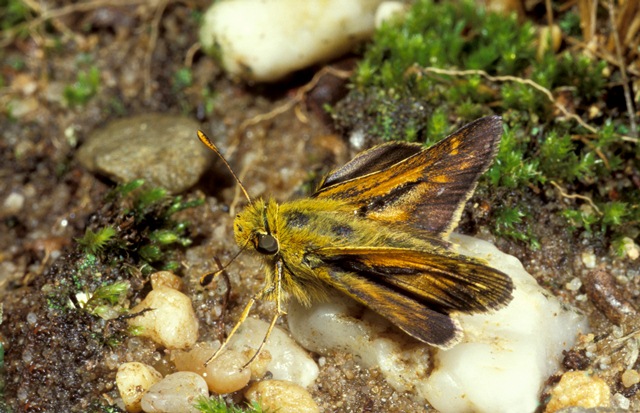 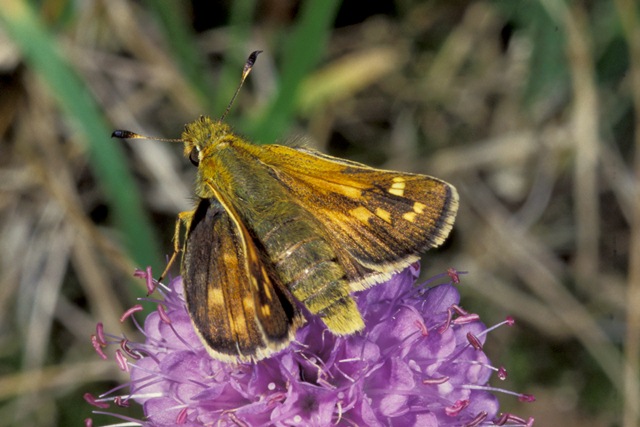 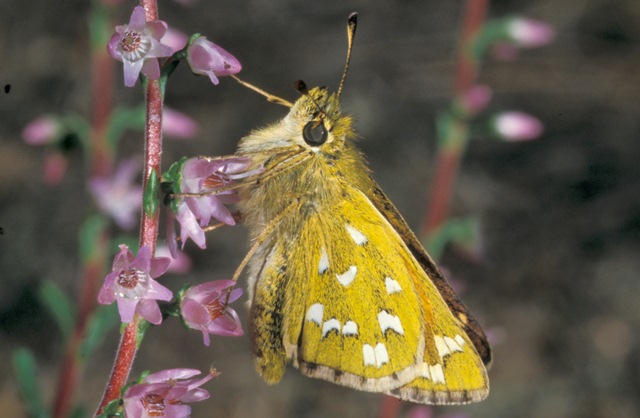
Photographs: Frits Bink ©.
Very small or small, wing length 14 (12-15) mm. In the Benelux a species typical of open landscape and poor vegetation of fine grasses, with a nectar source in the vicinity. It occurs in dunes, drift sands, heathland and grassland on poor soil with some grazing by cattle.
Adult is on the wing in the Benelux from end-June until end-August and peaks early-August.
The species occurs in maritime to severe continental climate, amplitude 6 to 20. Required heat sum of 400°d, tolerated maximum 2000°d. The corresponding climate windows are 19 and 38 weeks.
The species occurs also in the subarctic regions and because the larval development is too slow for a complete life cycle in one year, the development is spread over two years. (This life cycle is described for Hesperia comma catena Henriksen & Kreutzer 1982). However in the warm places of California there may occur two generations per year (Scott 1986: 437).
The population will survive when the vegetation consists of fine grasses and flowers.
Ecological characteristics
Behaviour over time
Overwintering: egg hidden in tussock of a fine grass.
Reproduction: starts oviposition after 5-7 days when there are 28 (24-32) eggs in the body. Estimated potential production 3.3 times as much.
Larval feeding periods: from mid-March until early-July.
Generations: in Benelux always one.
Spreading of risk: not observed.
Life cycle: egg 26-32 weeks; larva 105 (95-112) days; pupa 18 (13-24) days.
Life span of adult: long, over 4 weeks.
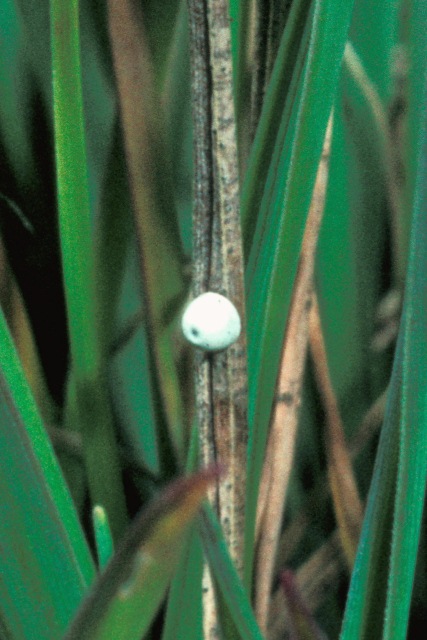 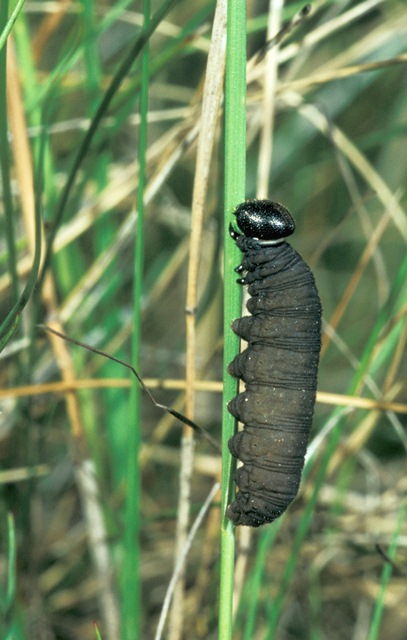
Photographs: Frits Bink ©.
Behaviour in space
From stay-at-home to migrant: stay-at-home, spatial requirement modest despite the fact that it may well fly distances of many kilometres in its life time.
Finding a mate: male perches, mostly on a spot of bare ground, behaving territorially, but also visits places rich in flowers where females are met.
Orientation in the landscape: open landscape with sparse vegetation of fine grass.
Oviposition: lays one egg per tussock, stuck to an old leaf.
Defence
Threats from other organisms: larva lives well hidden in its tent in the heart of a tussock, the black colour of larva may be a defence against avian predators.
Threats from the environment: the larva is well protected, the adult butterfly endures cold as well as heat and drought.
Feeding habits
Adult: nectar only, heath, thyme, bird’s-foot trefoil, knapweed, thistle.
Larva: larva constructs a tent-like shelter in the heart of a tussock and feeds on the surrounding grass.
Larval foodplants
Plant species: Poaceae, fine grasses growing in small tussocks e.g. Corynephorus canescens, Festuca ovina, F. rubra.
Journal
Rearing experiments based on specimens from national park Hoge Veluwe, Netherlands:
30 August 1985, females captured at the Hoge Veluwe, one laid 24 eggs within three days.
Overwintered outdoors
25 March1986: taken indoors, first egg hatched.
4 April: one larva in moult L1-2, yellow in colour.
19 April: five larvae in second instar, colour changed into green-grey.
3 May: larvae in third instar.
21 May: biggest larva 10 mm.
1 June: two larvae last instar, two in fourth.
28 June: one prepupa, the black larva has now two wax excretion marks on the ventral side.
4 July: one larva just pupated, smallest one still in moult L4-5.
17 July: first pupa hatched, female, egg load: eight half chorionated eggs.
1 August: second pupa hatched.
Table 4-1. Results of dissections

Table 4-2. Collection and observation localities
F, Aurel, 400 m, 44° 43’N – 5° 16’E; 29 August 1984.
F, la Bruyère 45° 39’ 01”N – 5° 38’ 09”E; 25 August 1984.
F, Lorraine, Dieue-sur Meuse 49° 05’ 11”N – 5° 27’ 25”E; 19 August 1984.
F, Maison-du-Bois 46° 57’ 57”N – 6° 25’ 17”E; 24 August 1984.
F, Montmédy 217 m, 49° 31’ 07”N – 5° 21’ 33” E; 18 August1984, 19 August 1984.
NL, Hoge Veluwe 52° 05’N – 5° 51’E; 11 July 1983, 30 July 1984, 30 August 1985.
NL, Hoge Veluwe 52° 04’ 47”N – 5° 49’ 47”E; 27 July 2000, 31 August 2000.
S, Öland, Stenåsa 56° 32’ 44”N – 16° 36’ 43”E; 15 August 1983, 21 July 2004.
Fig. 4-1. Hesperia comma, phenogram adapted from Fichefet et al. 2008: 43.
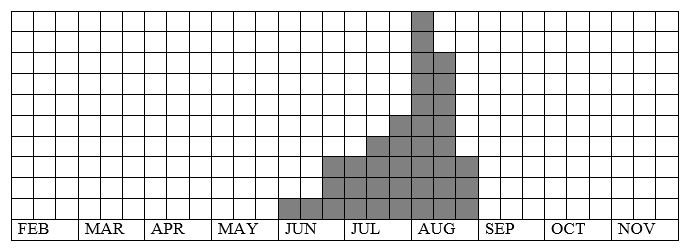
Fig. 4-2. Hesperia comma, habitat characteristics.
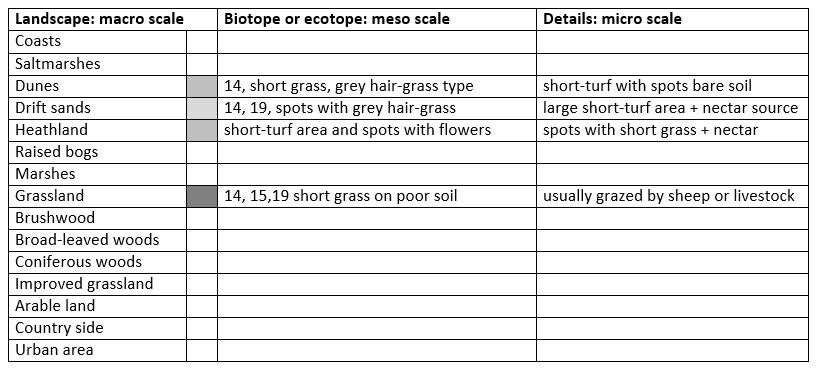
Fig. 4-3. Hesperia comma, climate matrix, heat-sums 400 - 2000°d.
Hesperia comma catena, cycle of 2 years, heat-sums 80 – 150°d (dark cells).
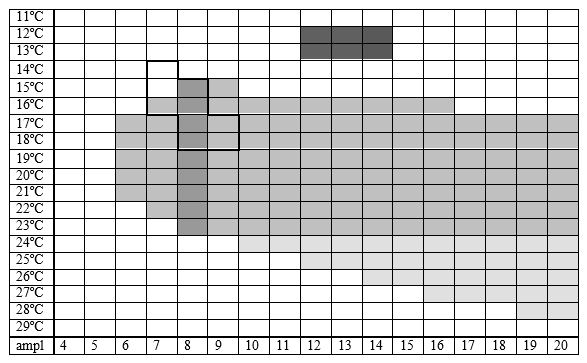
|










